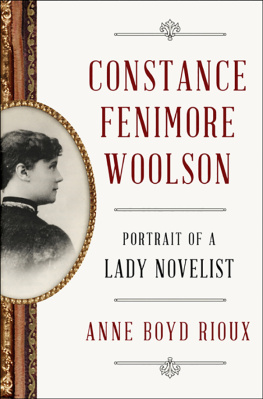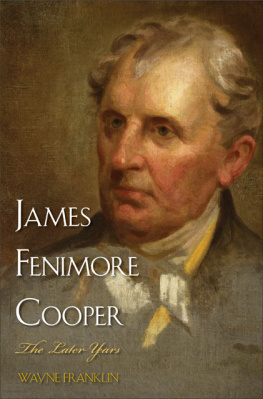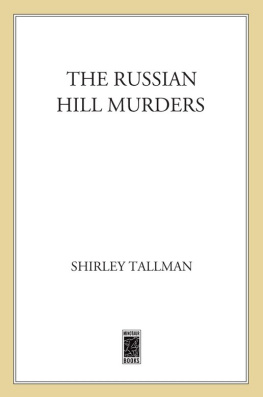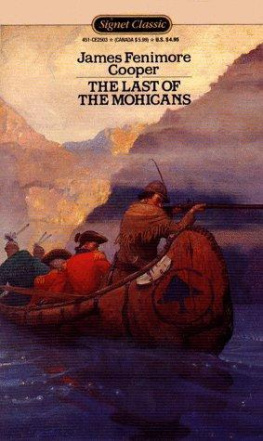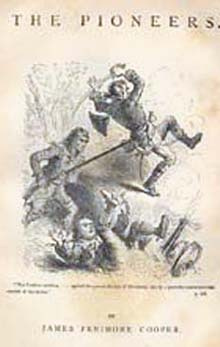
Constance
Fenimore
Woolson
PORTRAIT OF A LADY NOVELIST
ANNE BOYD RIOUX

W. W. NORTON & COMPANY / NEW YORK / LONDON
INDEPENDENT PUBLISHERS SINCE 1923
T HIS BOOK would not have been possible without the groundwork laid by the scholars of the Constance Fenimore Woolson Society, especially Sharon Deans years-long effort that resulted in The Complete Letters of Constance Fenimore Woolson. I am enormously grateful for her willingness to share the manuscript before publication and for her support throughout the research and writing of this book. The work of Joan Weimer, Cheryl Torsney, Victoria Brehm, and Lyndall Gordon was also essential to providing me a gateway into Woolsons life and work.
Funding for this project came from the Office of Research at the University of New Orleans, which provided a Creative Endeavor Opportunity Grant in summer 2011; the National Endowment for the Humanities, which granted me a fellowship for the calendar year 2012; the English Department at the University of New Orleans, which supplemented the NEH fellowship; and the Louisiana Board of Regents, which provided an ATLAS (Awards to Louisiana Artists and Scholars) Grant for a teaching reduction in spring 2013 and travel funds to conduct research in Europe.
My immense thanks to the Department of English at the University of New Orleans, particularly the chair of English, Peter Schock, for providing funding for research assistants and for supporting my work in the few ways left to an underfunded department in a university suffering repeated, draconian budget cuts. The following students provided invaluable assistance in the research and production of this book: Megan Cian, Chance Sweat, Coleen Muir, Kimberly Clouse, and Erin Henley. The amazing students in two graduate seminarsHenry James and the Women Who Influenced Him and Writing Livespushed me to think further about the Woolson-James relationship and writing the lives of women of the past.
I am grateful to Sharon Dean, John Pearson, Sharon M. Harris, and Robert D. Richardson for writing letters of recommendation for grant applications; to Cheryl Torsney, Keith OBrien, Stephanie Stanley, Kate Stewart, Catherine Michna, Molly Mitchell, Patricia Henley, and Miki Pfeffer for feedback on the book proposal and/or chapters of the manuscript; and to Beverly Rude for invaluable editorial assistance throughout. Michael Gorra, Pierre Walker, and Sharon Dean graciously read and commented on the entire manuscript. Any errors that remain are my own.
In collecting the primary research materials for this book, I have incurred many debts. The greatest one I owe to Micha Grudin, who transcribed for me the twenty-two letters Woolson wrote to Francis Boott, now in possession of the descendants of Francis Boott Duveneck. My thanks as well to Carol Osborne for putting me in touch with Micha. I am grateful to the Interlibrary Loan staff at the University of New Orleans, particularly Janet Crane; Hilary Dorsch Wong at the Kroch Library at Cornell University; Dr. Richard Virr, Head and Curator of Manuscripts at McLennan Library, Rare Books and Special Collections Division, McGill University; Darla Moore and Wenxian Zhang at the Archives of Olin Library at Rollins College, Florida; Ann Sindelar and the staff of the Western Reserve Historical Society; Greg Zacharias and Rosalind Parr at the Center for Henry James Studies; Mark Boarman at the Thompson Library at Ohio State University; Jonathan Matthews, Assistant Site Director of Old Cahawba; Marylou Bradley and RuthAnne Jackson at the Kauai Historical Society; and John McClintock, archivist at The Albany Academies.
I am also grateful to the following individuals for helping me to locate important sources. Connie Anderson, great-great-niece of Constance Fenimore Woolson, scanned pages of the Mather family scrapbook. Lyndall Gordon helped me locate letters by Woolson. Gary Woolson generously donated many books related to Woolson, after Hurricane Katrina claimed my home library, and shared his genealogical research as well as the death record of Charles Woolson Jr. Edoarda Grego shared with me her translations of Venetian newspaper accounts of Woolsons death. Sharon Harris generously aided me in searching periodical databases to which I did not have access at my institution. Rosella Mamoli Zorzi provided valuable information on the Casa Semitecolo in Venice. Pierre Walker shared proofs of The Complete Letters of Henry James, 18781880, volume 2, before their publication in 2015 by the University of Nebraska Press. Wayne Franklin and Rochelle Johnson shared letters relating to the Woolson family that they found in the course of their research on James Fenimore Cooper and Susan Fenimore Cooper, respectively. Janet Crane and Jeanne Pavy helped me to scan illustrations. Stella Gray and her granddaughter Ivy Gray-Klein photographed letters written by Clare Benedict.
I am also grateful to the many who helped make my trip to Europe to follow in Woolsons footsteps a success. In Florence, Caroline Burton Michahelles, invited me for lunch at the Villa Brichieri-Colombi and delighted me with her hospitality. I am grateful to Stephanie McCoy, who is writing a novel about Woolson, for putting me in touch with Ms. Michahelles and providing travel advice generally. In Venice, Rosella Mamoli Zorzi gave me a tour of the Grand Canal and showed me landmarks important to Woolson; she also showed me some fragments of Woolson letters at the Biblioteca Nazionale Marciana. In Rome, Amanda Thursfield, director of the Non-Catholic Cemetery, was a wonderful guide and dinner companion. In Oxford, Dr. Robert Tobin, the chaplain of Oriel College, helped me identify Woolsons home outside the gates of the college and discussed the High Church movement in the Anglican Church over tea; Dr. Peter Groves, parish priest of St. Mary Magdalen, gave me a thorough tour of Woolsons home in Beaumont Street, where he now lives; and Lyndall Gordon invited me to lunch at St. Hildas College, Oxford University, where we had a wonderful talk about all things Woolson.
Family and friends also offered their assistance with childcare over the years, giving me the gift of time in which to write. I want to particularly thank my mother, Beverly Rude, and my good friend Catherine Michna, who were more than generous.
I am immensely grateful to my agent, Barbara Braun, for having faith in this project and finding such a splendid home for it. To my editor at Norton, Amy Cherry, I owe more than I can say, from her championing of the project to her invaluable advice on the manuscript, and ultimately her belief in both me and Woolson. I cant imagine a better editor to have worked with on this project so close to my heart. Remy Cawley, editorial assistant at Norton, was a dream to work with. She answered my never-ending queries about manuscript preparation and production so promptly and patiently that she deserves some kind of award. Nancy Green did a tremendous job copyediting, saving me from many errors.
Paul, Emma, Merlin, and Fritzie, you are my true country, my real home. Thank you for providing the love and ballast in my life that I wish Woolson could have had in hers.
ALSO BY ANNE BOYD RIOUX
Writing for Immortality: Women and
the Emergence of High Literary Culture in America
Wielding the Pen: Writings on Authorship
by American Women of the Nineteenth Century

O N MARCH 5, 1840, a healthy, plump little girl was born to Hannah and Charles Jarvis Woolson in the riverside village of Claremont, New Hampshire. They named her Constance. Before they had time to adjust to the fact that yet another girl, their sixth, had been born to them, the older ones fell ill. Ominous red rashes spread across their faces, indicating scarlet fever. Connie, as they called her, was protected by her mothers milk, and Georgiana and Emma, the oldest, recovered. But five-year-old Ann, four-year-old Gertrude, and two-year-old Julia did not. They died before Constance was a month old.
Next page
